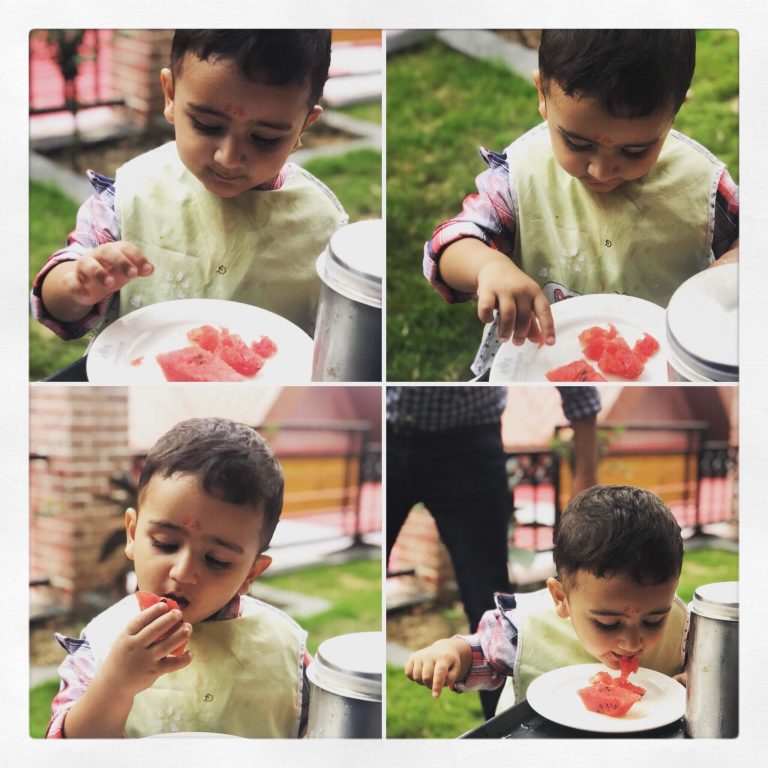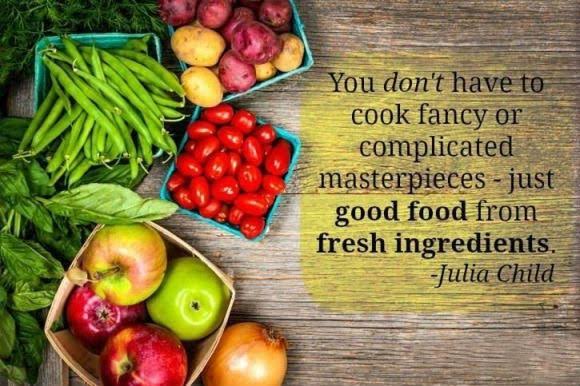“People who love to eat are always the best people.” This is what pioneer French-American chef Julia Child believed and honestly, I believe in it too.
It is imperative that we as parents expose our children to all the flavors that we can, make them want to experiment with new tastes and most importantly LOVE FOOD! This might sound like a herculean task for any mother with a toddler, but believe me, it is not. I have few tips and some advice for good feeding practices that should be incorporated by mothers with a toddler.
Disclaimer: This is not a weaning advice blog and these methods are universally applicable for all toddlers irrespective of baby-led weaning or traditional weaning.
Mealtime should have consistency
Babies are sticklers for routine and consistency. Anything that is repetitive in their daily routines becomes a part of their way of life. By routine I not only mean the meal timings through the day but also having a fixed chain of events that lead to mealtime. Like washing hands before meal, placing them in a fixed chair where they eat daily, wearing a bib, placing cutlery or utensils on the table. These small actions signal mealtime in their heads and makes them anticipate food which is a very positive first step in anyone’s journey to an enjoyable mealtime.

Stimulate all 5 senses
Food should not only be about the taste. It should appeal to all the 5 senses for any person and children are no different. You should incorporate 2 different food items with different taste, smell, appearance and consistency in one meal. Some examples are vegetable pulao with raita, cheese omelet with tomato chutney, dal chila with mango chutney, aloo paratha and tomato soup, rice and dal with a dessert. This sensory stimulation helps in cognitive development and introduces them to different types of food available to them.
Play with food
Learning comes to any child through play. We give them toys to teach them colours, shapes, animals and what not. Learning about food therefore, becomes very easy for them if we let them play with it. When you sit with your toddler to feed him in the traditional way, always give him a part of his meal in a bowl and let him explore it with a spoon or with his hands. Give them small bite size finger foods on their table to pick up and eat. This not only encourages them to self-feed but also helps in fine-motor development, makes them independent.
Telling them stories and poems like “aloo-kachalu” is another way of introducing different vegetables and food items in their vocabulary.
Let them be free
I always tell parents to do this exercise before they introduce any new food item. Give your child the freedom to choose his likes and dislikes. While introducing a new flavor, fruit or a vegetable, keep it in front of your child and just observe what he does with it. You will be surprised to see your child look at it, smell it, may be lick it and then either gulp it down with a smile (approved!) or throw it away (disapproved!).
DO NOT FORCE FEED YOUR CHILD. Just because you want your child to eat broccoli on a particular day doesn’t mean he wants that too. Leave it for another day and try again. Any kind of force used during meal time leaves a negative vibe on them and repeated force feeding actually makes them dread mealtime. That completely defeats the purpose of this exercise.
Practice makes a child perfect!
When one is stuck in the deep end of the pool, he struggles but learns how to swim. After that all he needs is practice. Self-feeding is like swimming. Keep some food on your child’s plate in front of him. If at the end of his mealtime your child manages to put 2 kernels of rice in his mouth all by himself on his first try, half the battle is won already. Your child has already chosen to help himself, he has liked what he ate, he has figured out how to eat. Now all he needs is practice. Practice sessions are always super messy. Get over it because that’s the only way to make them learn.

Make tasty food, not fancy food
“You don’t have to cook fancy or complicated masterpieces, just good food with fresh ingredients” – another quote from Julia Child, the chef who changed the way American women cooked back in 1960s.
Children don’t know the difference between imported and Indian food. They only care for tasty food. Don’t go overboard with trying to make fancy western meals. Cook good food from our local Indian produce and local ingredients.
Experiment with new flavors
A lot of parents in Indian households prepare food separately for the children in the family. “Bachon ka khana” with less salt and no masala, khichdi type semisolid gulpable baby food. DO NOT TRY TO FEED FOOD THAT YOU DON’T LIKE YOURSELF. Indian cooking is full of flavors and color. Children should eat what the whole family is eating. This concept is called “FAMILY-POT FEEDING”. You can tone down the spice in the food but introduce all the spices to your child early.
Be a rolemodel
Parents are the best role models for their children. In families that eat together and enjoy mealtime, love for food comes naturally to the children. Give your child his well-deserved seat at the big table while you have your meal. Your child’s mealtime may not coincide with yours, but he can sit with you and play with his food while you have your food. These table etiquettes are important for a child’s overall development.
Follow a NO SCREEN DURING MEALS policy not only for your child but also for yourself.
Hopefully these healthy eating practices will guide you and your child to develop a happy mealtime routine.




